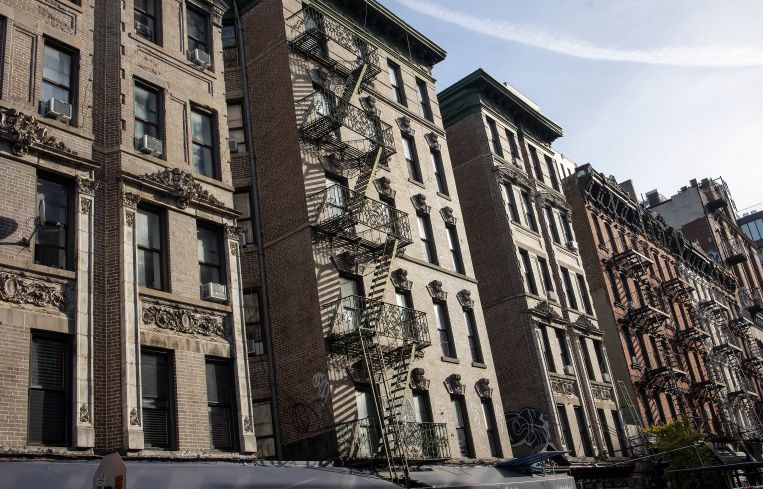Tenant Protections Not to Blame for Vacant Rent-Stabilized Units: NYC Comptroller
New analysis stirs debate over the effects of a 2019 state law and ‘warehousing’
By Abigail Nehring March 12, 2024 5:54 pm
reprints
How many rent-stabilized apartments are sitting vacant in New York City because their landlords can’t afford to fix them up? Not all that many, according to city Comptroller Brad Lander.
Landlords currently keep few apartments off the market due to dilapidation, and there is no evidence that the tenant protections signed into law in the landmark 2019 Housing Stability and Tenant Protection Act (HSTPA) contributed to higher vacancy or distress in the city’s rent-stabilized housing stock, according to Lander’s analysis of the most recent federal Housing and Vacancy Survey results released last month.
The survey found 3,028 units in New York City were off the market in 2023 due to problems that made them uninhabitable — no working bathroom or an active vacate order, for example. That’s a steep decline from 11,520 such units that existed in 2021, according to that year’s survey.
“There is simply no evidence for landlord claims that the HSTPA should be rolled back, or vacancy decontrol restored in any form,” Lander said in a statement after releasing his report Tuesday.
The comptroller recommended state lawmakers make modest changes to keep rent-stabilization regulations in line with inflation and bring units back online in buildings facing what he called “genuine hardships.”
The Community Housing Improvement Program (CHIP), a group that represents rent-stabilized owners in New York, scoffed at Lander’s conclusions and numbers.
Jay Martin, CHIP’s executive director, accused the comptroller of “basically lying” and said in a statement that the report manipulated the survey statistics.
“The comptroller said he found ‘no evidence’ of a problem because that is what he wanted to find,” Martin said. “It’s blatant political pandering and, frankly, it is embarrassing that an elected official is wasting time spreading misinformation in the middle of a legitimate housing crisis that needs everyone’s focus.”
Landlords keep “the vast majority” of vacant units off the market because those units need renovations to comply with housing quality laws, whether or not the apartments are officially dilapidated, according to CHIP.
But a spokesperson for the comptroller’s office responded that CHIP can’t verify this claim, and added that rolling back rent stabilization is not the way to get vacant units back on the market during a housing crisis.
The phenomenon of “warehousing” — in which landlords supposedly intentionally keep apartments vacant after doing a cost-benefit analysis of necessary repairs — surged into the public’s consciousness three years ago as the rental market recovered from the COVID-19 exodus.
The vacancy rate for the city’s rent-stabilized housing stock more than doubled from 2 percent in 2017 to 4.6 percent in 2021, according to that year’s Housing and Vacancy Survey, which is conducted by the U.S. Census Bureau every three to four years. The 2021 survey found 42,860 rent-stabilized apartments were vacant and yet still not available to rent, giving rise to much speculation as to why.
But, by 2023, that number had declined 39 percent to 26,310.
Data from New York’s state housing agency obtained by The City threw the Housing and Vacancy Survey into doubt as the longtime standard bearer of the health of the city’s housing stock. The state housing agency figures revealed that the vacancy rate was much higher for the city’s rent-stabilized housing stock, and that it had nearly doubled from about 34,000 units in 2020 to more than 61,000 the following year.
A spokesperson for CHIP said the Housing and Vacancy Survey has limitations because it uses a sample of about 15,000 households to project broader conclusions, among other factors.
Still, this year’s federal survey revealed a startlingly low overall vacancy rate of 1.4 percent — which both sides agree indicates a dire housing crisis.
Abigail Nehring can be reached at anehring@commercialobserver.com.


